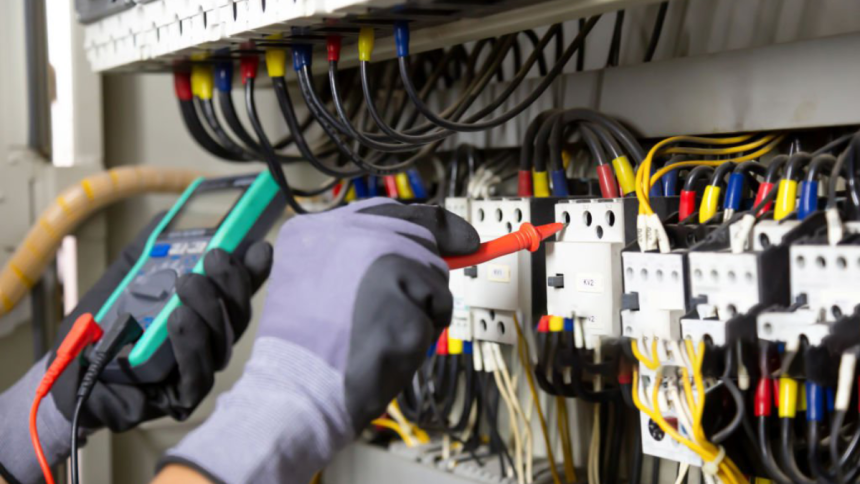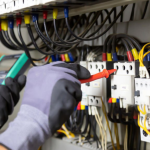Electrical systems are the backbone of our homes, workplaces, and industrial operations. But with that power comes the need for safety—and that’s where circuit protection comes in. Two of the most commonly used devices for circuit protection are MCBs (Miniature Circuit Breakers) and MCPs (Motor Circuit Protectors). While they might seem similar at first glance, they’re designed for very different purposes.
If you’re managing an electrical installation or just trying to understand your home’s switchboard, knowing the difference between these two devices can help you make smarter and safer choices. Let’s break it all down.
What Is Circuit Protection?
Before diving into the specifics of MCBs and MCPs, it helps to understand the broader purpose of circuit protection. Simply put, circuit protection devices are designed to automatically interrupt the flow of electricity when something goes wrong. This prevents damage to electrical components, reduces fire risks, and protects people from electric shock.
Common causes of circuit failure include:
- Short circuits
- Overloads (drawing more current than the circuit is rated for)
- Ground faults
- Faulty wiring or equipment
Both MCBs and MCPs are designed to handle these issues, but the way they do it—and where they’re best used—differs.
What Is an MCB (Miniature Circuit Breaker)?
An MCB, or miniature circuit breaker, is a device used to protect low-voltage electrical circuits from overload and short-circuit conditions. These are the most familiar circuit breakers to the average homeowner and are typically found in residential and commercial switchboards.
Key Features of MCBs:
- Current Ratings: MCBs are available in a wide range of current ratings, typically from 1A to 100A.
- Trip Mechanism: They use a thermal-magnetic mechanism to detect and trip during overcurrent or short circuit conditions.
- Resettable: After tripping, MCBs can be manually reset, unlike older-style fuses which need to be replaced.
- Ease of Installation: They’re modular and often clip directly onto DIN rails in distribution boards.
MCBs are ideal for protecting lighting circuits, outlets, and other standard electrical loads. They are not, however, designed to protect motors or highly inductive loads, which brings us to MCPs.
What Is an MCP (Motor Circuit Protector)?
MCPs, or Motor Circuit Protectors, are specialized circuit breakers designed specifically to protect electric motors. Motors present unique challenges for protection, including high inrush currents when starting and sustained operating currents that fluctuate based on load. A standard MCB may trip unnecessarily in these conditions.
Key Features of MCPs:
- Designed for Motors: MCPs account for motor startup surges and are calibrated to avoid nuisance tripping.
- Adjustable Settings: Many MCPs allow for adjustable trip settings to accommodate different motor sizes and startup characteristics.
- Magnetic Protection Only: Some MCPs offer magnetic-only protection (no thermal trip), which is suitable when thermal overload protection is already provided by another device like an overload relay.
- Coordination: They are often part of a motor starter setup, working alongside contactors and overload relays.
MCPs are commonly used in industrial environments, commercial HVAC systems, and any application where motors are in regular use.
Key Differences Between MCBs and MCPs
Understanding how MCBs and MCPs differ can help you choose the right one for your application.
| Feature | MCB (Miniature Circuit Breaker) | MCP (Motor Circuit Protector) |
| Primary Use | General-purpose circuit protection | Motor protection only |
| Response to Surges | May trip during motor startup | Designed to tolerate motor surges |
| Trip Type | Thermal + magnetic | Magnetic-only (usually) |
| Adjustability | Fixed trip values | Adjustable trip settings |
| Typical Installation | Residential/commercial panels | Industrial motor control panels |
When to Use MCBs vs. MCPs
If you’re wiring a house, office, or retail space with standard lighting and power outlets, MCBs are usually the right choice. They’re cost-effective, reliable, and readily available.
On the other hand, if your project involves motors—such as pumps, compressors, or industrial equipment—MCPs are the better option. They provide the precision needed to handle motor inrush without compromising protection.
Using an MCB in place of an MCP can result in frequent nuisance tripping or even potential damage to the motor. Conversely, using an MCP in general applications can result in insufficient protection for non-motor loads.
Safety Considerations
No matter which type of protection you choose, proper installation and adherence to local electrical standards are crucial. Always consult with a qualified electrician or engineer to ensure that your system is protected appropriately.
In Australia, all electrical installations must comply with the AS/NZS 3000 standard (often referred to as the Wiring Rules), which outlines the correct use of protective devices.
Final Thoughts
Choosing the right circuit protection device is about more than just flipping switches. It’s about ensuring long-term safety, system efficiency, and equipment longevity. While both MCBs and MCPs serve the vital role of preventing electrical faults, they are tailored to different applications.
An MCB (miniature circuit breaker) is your go-to for everyday electrical circuits. For anything involving motors, an MCP is specifically designed to handle the demands and quirks of those systems.
Whether you’re managing a residential setup or working in an industrial facility, understanding these tools helps you keep the lights on—and the circuits safe.
Lynn Martelli is an editor at Readability. She received her MFA in Creative Writing from Antioch University and has worked as an editor for over 10 years. Lynn has edited a wide variety of books, including fiction, non-fiction, memoirs, and more. In her free time, Lynn enjoys reading, writing, and spending time with her family and friends.















